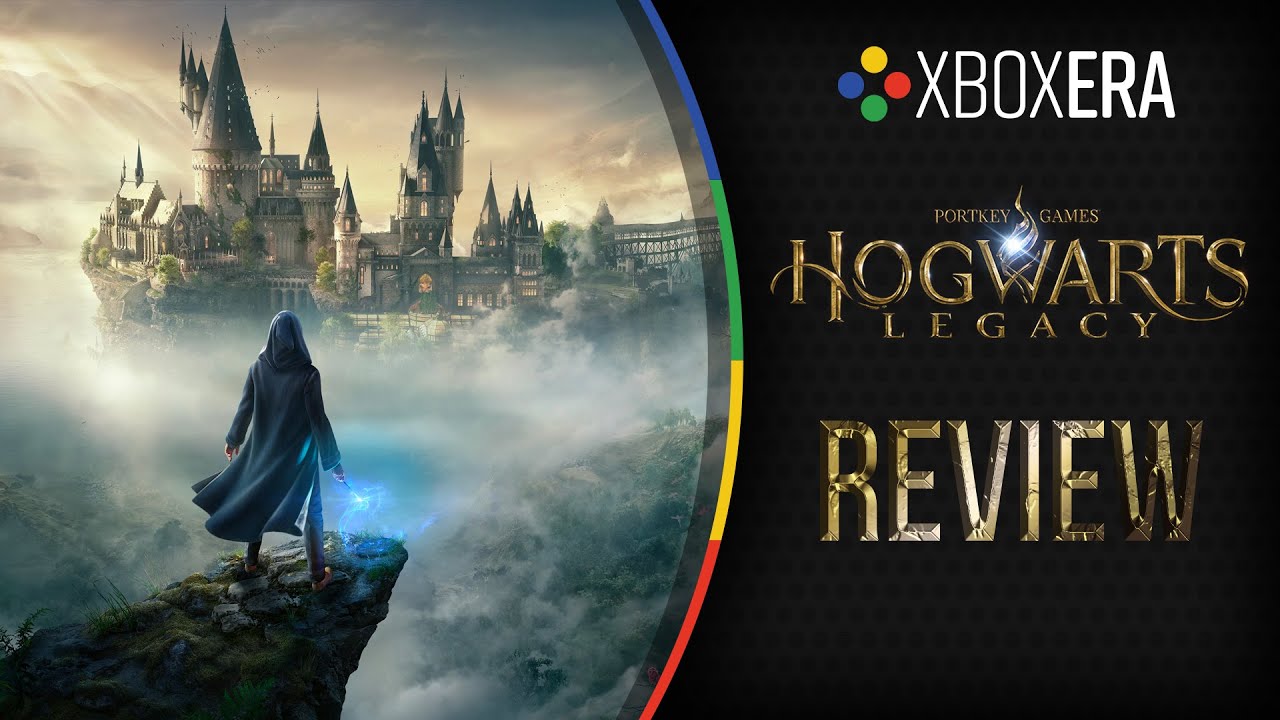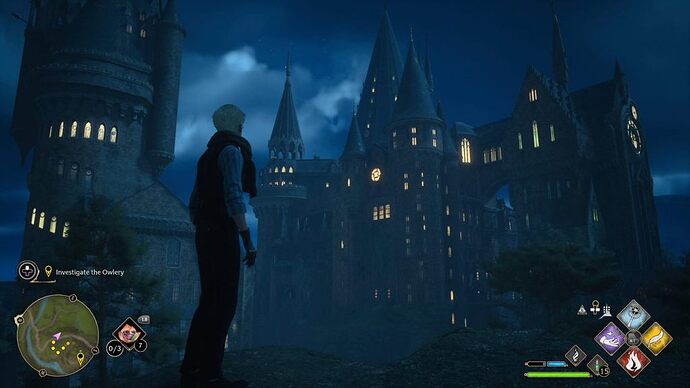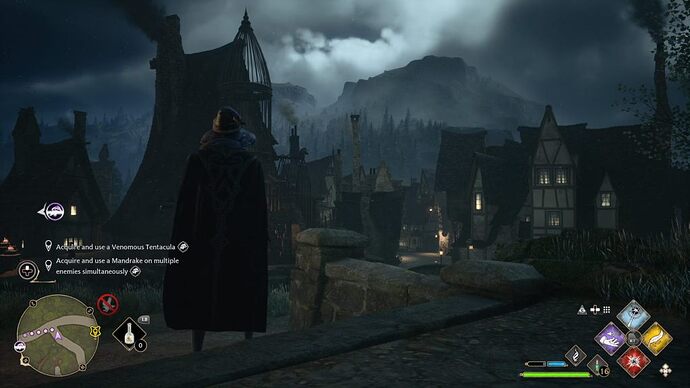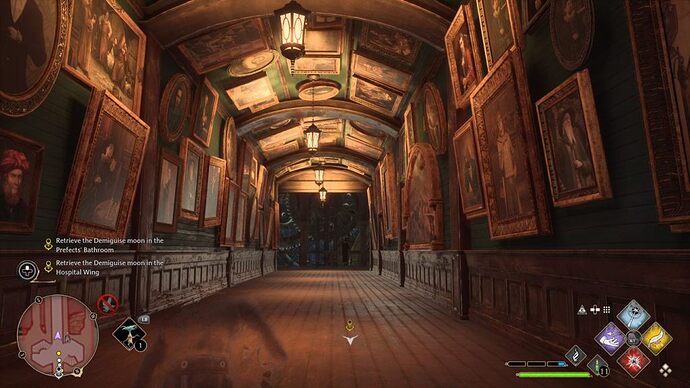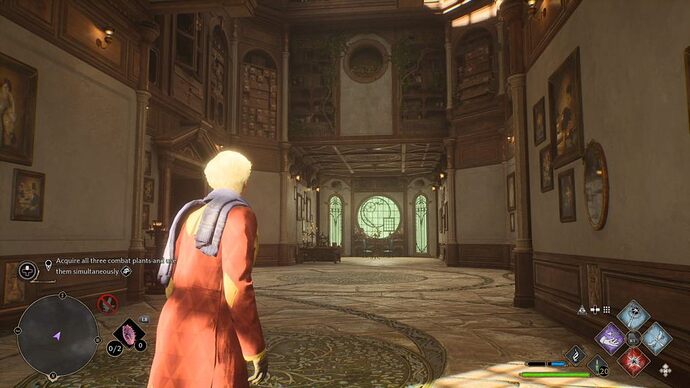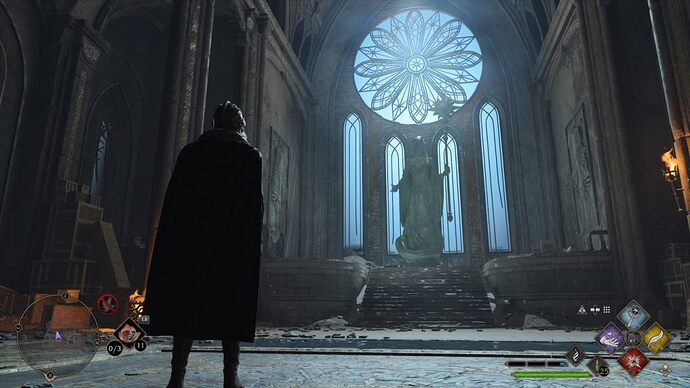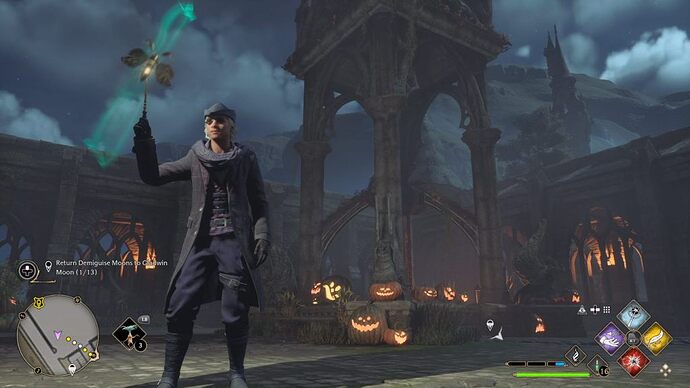Originally published at: Review | Hogwarts Legacy - XboxEra
“Fear of a name increases fear of the thing itself.”
Before digging into the game, let’s tackle the elephant in the room: The team at XboxEra find the words and actions by the author of the Harry Potter and Wizarding World books, J.K. Rowling, to be harmful and offensive, targeting our friends and loved ones in the transgender community.
Ultimately, after careful deliberation, we decided to cover the game and treat it for what it is: a videogame, which many will use specifically to escape from the problems of real life itself. This review will not focus on J.K Rowling’s harmful opinions and actions, however, if you want to hear about that directly from those it affects; we strongly encourage you to read this article before making any purchasing decision.
The harm for which J.K. Rowling is directly responsible should be discussed and criticised, and no-one should be afraid to speak against it.
As Rowling herself wrote – “It is our choices, Harry, that show what we truly are, far more than our abilities.”
It took an eternity and a half, but it’s here: the long-awaited open world game set in the mythical Wizarding World most famously known via the Harry Potter series of books by J.K. Rowling and its movie adaptations by Warner Bros. Warner’s publishing division have finally made a big budget wizard game, releasing on Xbox Series X|S, PlayStation 5 and PC for now, with Xbox One, PS4 and Switch arriving at a later date.
But is it any good? Let’s cast a few spells together and find out.
You’re a Wizard, Harry.
So Hogwarts Legacy is a prequel, set long before the more recent books/movies in the Fantastic Beasts series going all the way up to the 1800’s. This new setting allows us to explore a lesser known era in the franchise, with familiar surnames like Weasley and Snape already a part of the roster of characters. We follow the adventures of our Wizarding World OC who’s joining the legendary magic school of Hogwarts unusually late; in their fifth year due to their age.
This means they need to get up to speed as soon as possible with some of the basics, while also learning spells and more advanced magical theory. They, not unlike Harry Potter himself, immediately show some rarely seen potential, with some innate abilities linked to their parents’ early demise.
As has been largely advertised, Hogwarts Legacy gives players a proper player creator, with customizable face and body features, all the way down to hair options and scars. The game allows the player to have a feminine voice on a male body type and vice versa, facial hair on either typical male or female character models, and even the character’s voice and its pitch can be tweaked, regardless of the physical traits and gender the player is looking to play as.
The game doesn’t specifically ask the player’s gender, but you do have to choose between the title of wizard or witch. While it may seem exclusionary, considering the game is set in the 1800’s, I think this is a decent compromise that still allows anyone to create any sort of virtual persona for their wizarding adventure.
There’s a well-made character in the game’s lore that transitioned, and there’s students from all across the globe, giving the school a good touch of diversity while still understanding the time and setting of the game itself. Lastly, in a wonderful spot of fan service, the opening segment of the game sees the Sorting Hat deciding which Hogwarts House the players should go into between Gryffindor, Hufflepuff, Slytherin and Ravenclaw – but ultimately, the player can choose something else altogether, or even use the official tool to determine your legacy on the Wizarding World website.
What’s life without a few Dragons?
Their skills are immediately tested when a powerful dragon attacks the Beauxbatons carriage that magical theory teacher Eleazar Fig was using to accompany the young apprentice towards the school. The follow-up to this attack and the attempts to get back on track towards Hogwarts serve as a meaty introduction to the game, with various cool locations, well-directed cutscenes and most importantly tutorial segments teaching the player the first basic spells, such as Lumos to light up the wand, Protego to parry enemy attacks via a magic shield and Revelio, used to locate otherwise invisible or hidden elements in the surroundings.
This spell also highlights collectibles and other interactive elements in the vicinity, not unlike the Eagle Vision found in the Assassin’s Creed titles. I won’t spoil much of the story, but it becomes clear early on that some of the main antagonists in the plot are goblins who seem to have mastered certain dangerous dark arts.
Eventually, you will finally reach Hogwarts itself, and that’s when the enormous interior of the school starts slowly opening up for some addictive exploration. It’s practically a 3D Metroidvania of sorts, with various doors and locations initially inaccessible due to not having learned specific spells, lacking a certain kind of key or not yet reaching a crucial point in the story. There are plenty of secret pathways, rooms and areas that can only be seen, let alone accessed, via specific actions.
Still, the vast majority of the school’s many interconnected rooms, corridors, stairs and gardens are fully explorable from the start, and their visual fidelity – especially compared to the movies – is astonishing. I’ve seen the movies plenty of times, and I’m honestly in awe at how well the various classes and iconic locations have been recreated. The everchanging Grand Staircase, the living paintings, the uniforms, the owl mail, and so much more… everything is how it should be, and Avalanche Software proves their team is full of people who love and understand the Wizarding World.
One of the most impressive secrets of the castle is the Room of Requirement. This area is found a couple hours into the main story and is effectively a completely customizable, Animal Crossing-esque zone of Hogwarts. This is a special and personal place inside the school that keeps growing in size, and allows the sole player to customize the look of the walls, the pavement, adding a myriad of decorations like mirrors, paintings, trophy shelves and whatnot, all with a handy “editor” of sorts that helps changing visual styles, sizes and distances from one item to another on the fly. As the hours go by, players can even add specific tables to grow plants, brew potions – even a full-blown vivarium where we can bring in various rare species of animals, giving them yet another fully customizable, open playground with food, toys and all kinds of creature comforts. For reference, think of the Fantastic Beasts movies and how the protagonist Newt is giving these animals a new home.
As fans surely know, the surroundings of Hogwarts also contain many interesting things, and players can traverse large fully explorable areas in the school’s immediate vicinity. We get to visit iconic nearby towns such as Hogsmeade; we encounter expansive and beautiful lakes, mountains, hills, dungeons, towns, castles and wildlife – of the natural and supernatural kind alike.
After a couple hours, players can unlock the broom, and at a later stage further flying mounts, traversing these lands with incredible speed and ease, being able to spawn in the “vehicle” of choice nearly anywhere on the map. There’s even some basic climbing and swimming mechanics, and in general the player movement outside of Hogwarts is pretty smooth, with any location reachable fairly easily once you get hang of all the tools at your disposal.
I love Magic!
Aside from the vistas themselves, these open areas present activities and challenges that are usually rather different from the day-to-day inside of Hogwarts. For starters, there’s almost never any combat in the school; while outside of it there’s bandits, trolls, goblins, rabid wolves and much more to give the player trouble.
Aside from the combat encounters, which help create a bit of the so-called “emergent gameplay” that’s been all the rage for a good decade or so, so you should expect a bit of the usual open world “filler” when it comes to activities, just with a Wizarding World spin. Little puzzles to solve via the use of magic; enchanted collectibles to find like flying pages of a book; and plenty of challenges, side missions and more. It renders the activity outside of Hogwarts to be a little less memorable than when you’re on the school grounds, but it’s still a fun time.
Players familiar with third person action games published by Warner Bros. could already guess the games combat style, which is once again an evolution of the formula started back in Batman: Arkham Asylum circa 2009. But of course, the wizards and witches in this universe seldom use physical abilities, so don’t expect the crunchy punches of the caped crusader in Hogwarts Legacy.
While the player can move and dodge at pretty high speeds, all attacks are magic-based and mainly done with a wand, so expect to hit enemies with quick rays of light, elemental effects like Incendio; which sets the enemy on fire, Petrificus Totalus; which freezes them on the spot and so on. This means the player will stand relatively still from time to time, but the combat’s rhythm is comparable to the aforementioned Arkham style.
As the story goes on, the players will have unlocked dozens of spells, many of which can be used in combat in various ways. For this, a total of 4 different spell wheels can be unlocked, customized and switched from one another in an instant, creating a much more versatile combat system, with each spell having separate cooldowns to encourage rotating them instead of spamming the same two effective incantations we like most. There’s even a combo system, and the way the spells can be combined to create unique sequences is very impressive. Enemies can be pulled and pushed around, set on fire, frozen, transformed and so much more in quick succession, making them almost as if they were puppets in our ever-expanding arsenal of attacks. It’s a fun combat system with plenty of depth and variety, with real player agency in terms of creating combinations of largely different effects and spells.
You are here to learn the subtle science and exact art of Potion Making…
And while the vast majority of the attacks the players do will be done via the aforementioned wand, it doesn’t take long before various cool potions can be used to turn yourself into stone and become much more resistant to damage; cast lighting around the player and more. Even more interestingly, after learning in Hogwarts how to plant and reap magical seeds and plants, various living creatures can be summoned to fight alongside our protagonist or offer some other kinds of assistance. These, alongside various team-based duels that happen throughout the game, underline how fun it would have been to have some sort of co-op or PvP battles in the game. Maybe one day.
I guess it wouldn’t be a “AAA” game in 2023 without some sort of loot system, but fortunately Hogwarts Legacy doesn’t attempt to eat Destiny’s lunch – something too many games tried and usually spectacularly failed to do. Consider the system in place a sort of ‘Diablo-lite’ – the player can find all kinds of armor, hats, glasses, scarves etc, each presenting one of the many available styles, individual levels, statistics, even giving room for upgrades and “gems” that can be used on them to add additional features. And in true modern gaming fashion, each items look is permanently unlocked once obtained, with a free transmog system to change their look on the fly. Surprisingly, the game contains no microtransactions whatsoever, with the developers promising it’s also a feature not coming in the future.
On a technical level, Hogwarts Legacy looks pretty good, but it can’t fully hide its cross-generation origins. While most of the locales, character models and animations are well-made, some occasional lower quality assets pop up from time to time. The most noticeable issue that became increasingly prevalent, comes from the fact that Hogwarts and many other locations are effectively spliced up into multiple areas, so the game has to disguise loading times on occasion. This normally should be quite seamless, but sometimes this process can cause significant framerate drops; in some cases causing the door I wanted to go through to just ‘not open’ until the area to which I was transitioning had loaded behind the scenes.
There’s also certain characters and areas that occasionally suffer peculiar graphical artifacts, and even some parts in the open world that show how they procedurally generated in the beginning and then touched it up manually. As such, there’s a few floating trees or unusually placed rocks across the map. A patch already hit during my time playing the game, making some of these issues less frequent and far less noticeable. Special mention for the game’s soundtrack, which combines epic symphonic elements and playful fantasy music that could have been plucked wholesale from any Harry Potter movie. Even the iconic theme of the franchise is mixed into the songs here and there.
The Wand chooses the Wizard
The Wizarding World franchise always had some quite fascinating lore, yet it saw some ups and downs in the storytelling department, especially in recent times. So how does Hogwarts Legacy’s story hold up? The premise is eerily similar to Harry Potter’s story, all the way down to the protagonist’s parents dying and them somehow inheriting some mysterious powers.
By mainly following the framework, studies and life at Hogwarts, many scenes and conflicts are similar to those found in the books and movies. For example, the students having to plant a Mandrake is a scene that is played out in the game and it’s virtually identical its equivalent in the films. Underneath the fan service though, it’s mainly a story of a student finding themselves in a school full of character, mystery and things to do, with the mysterious forces and battles encouraging the player to keep going on a journey of self-discovery, rather than something truly engaging. It’s not a bad story by any means, with tons of highly creative artistic choices in its execution, but it ain’t no Prisoner of Azkaban.
Speaking of creativity, the developers certainly didn’t lack that when designing the original places and ideas to expand the already rich visual identity of lore of the Wizarding World. Be it hidden rooms inside Hogwarts or secret dungeons across the open world, there’s many impressive magic constructions in place, such as stairs, platforms and bridges that simply materialize or move before our very eyes, or seamless portals that transport us to parallel versions of the same location. These are often used for surprisingly creative, if fairly simple puzzles, though a few of them ramp up the difficulty rather quickly. Some puzzles require players to use various magic spells to move items around, which can sometimes be a pain to perform due to the usual videogame-y unreliability of in-game physics.
In Hogwarts Legacy, players will find an open world full of mystique and intrigue, and while some of the activities are or can become formulaic and repetitive, few titles of similar scope managed to wow me, even 20 hours into the game. Perhaps one of the reasons Hogwarts Legacy stands out from the masses is how much time is spent simply exploring the incredible Hogwarts grounds, the little villages surrounding the distinctive castle, and solving mysteries. The combat, which is genuinely fun and surprisingly deep, often takes a backseat in favour of world-building. Due to the sheer intensity of the experience, exploring the Metroidvania-esque maze of the school and discovering mysteries in every corner is far more rewarding and exciting than tackling the less surprising, yet still well-crafted and enjoyable open world.
I solemnly swear I am up to no good
So there you have it. Despite some technical hiccups and some creeping open world fatigue, Hogwarts Legacy is easily one of the most engaging AAA open world titles in recent memory. It recreates, tackles or at least has amsuing nods to practically all the fan favourite characters, locations and pieces of lore, and it keeps expanding the game in terms of scope, variety and ambition – even dozens of hours into the experience.
I could write a dozen other paragraphs about features, locations, game mechanics and ideas that I haven’t even mentioned, but I don’t want to spoil everything. I’m not even a huge Harry Potter fan, and yet I’ve found myself absolutely fascinated by the love, attention and care that was put into gifting the players the most engaging Wizarding Worlds videogame possible; one that will also easily keep you busy for dozens and dozens of hours.
Hogwarts Legacy borrows a lot of design choices and ideas from other open world titles, and yet, it creates a truly unique product unlike any title in the genre, with a true focus on world-building rather than non-stop combat encounters. It’s a game that should be experienced, even by those who aren’t Potter fans at all.
